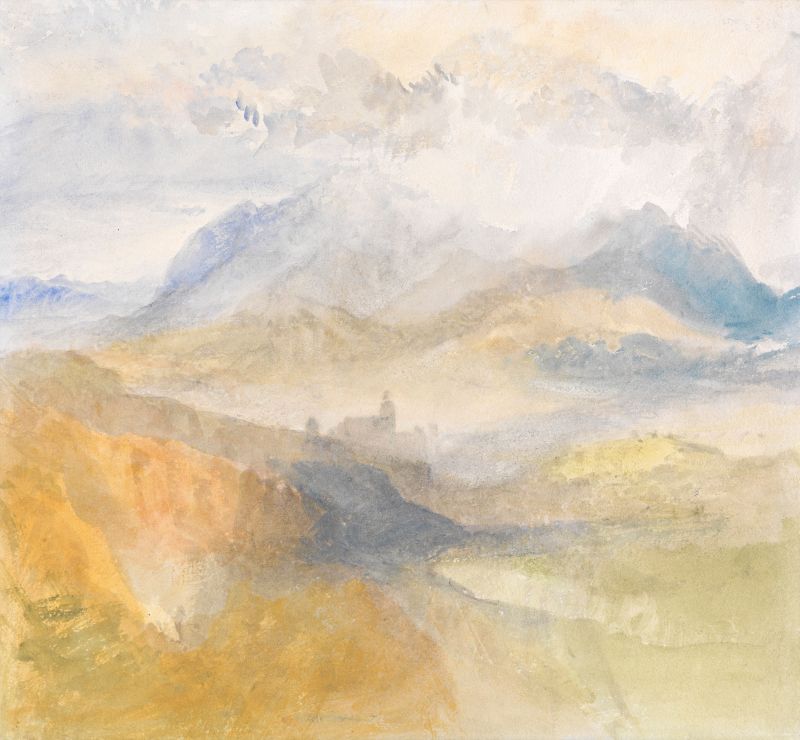
Joseph Mallord William Turner
1775–1851
A distant view over Chambéry, from the north, with storm clouds
Watercolour
9 ¾ x 10 ¾ inches; 248 x 273 mm
Painted 1836
There is lots of attention on late Turner at the moment, what with the show at the Tate (on until 25 January) the recent spectacular sale of Rome from Mount Aventine and Timothy Spall grunting his way through Mike Leigh’s biopic Mr Turner. Late Turner and Rome from Mount Aventine both bring into focus the importance of Turner’s greatest patron from the second half of his life, Hugh Munro of Novar. We currently have a stunning watercolour view made during the 1836 Alpine tour when Turner and Munro were travelling together – and sketching side-by-side – in the Alps. Not enough research has been done into Munro, who was clearly a shy and depressive character, but a close and constant friend to Turner. Turner is said to have suggested the 1836 tour to help alleviate Munro's depression. He had financed Turner's journey to Venice in 1833 and in 1844 he became one of the four trustees of Turner's charity for the relief of decayed and indigent artists. He was also one of Turner's executors.
Munro was clearly a man of extraordinary tastes and talents as a collector. I was reminded whilst visiting Rembrandt: The Late Works currently at the National Gallery that Munro had owned the Washington Lucretia. Browsing his Christie’s sales it is clear that he owned great old masters including Raphael's Madonna dei candelabri (Walters Arts Gallery, Baltimore) and Veronese's Vision of St Helena (National Gallery, London) along with some dozen oils, twenty or so large drawings, and fifty-five vignettes by Turner. Last year we had several pages from a sketchbook Turner made in 1824 whilst travelling in Yorkshire and which he later gave to Munro whilst the pair were in the Alps in 1836, the only securely documented occasion we have of Turner giving one of his precious sketchbooks away. This raises questions about the nature of their relationship, one that seems closer and more creative than merely patron to painter.